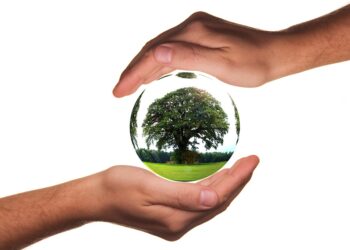[ad_1]
From Waste to Wealth: The Fascinating Journey of Recycling
Introduction
Recycling is the process of converting waste materials into new products to prevent waste of potentially useful materials, reduce the consumption of fresh raw materials, energy usage, air pollution, and water pollution. It plays a crucial role in sustainable development and environmental conservation.
The Recycling Process
The recycling process typically involves collecting, sorting, processing, and manufacturing new products from recycled materials. Here’s a brief overview of each step:
1. Collection
Waste materials are collected from homes, businesses, and other sources and transported to recycling facilities. Collection methods may vary depending on the type of material being recycled.
2. Sorting
At the recycling facility, the collected materials are sorted into different categories such as paper, plastic, glass, and metal. This step is crucial to ensure that the materials can be processed effectively.
3. Processing
Once sorted, the materials undergo processing to prepare them for manufacturing. This may involve shredding, melting, or other methods to break down the materials into a form that can be used to make new products.
4. Manufacturing
The processed materials are then used to manufacture new products. This may involve using recycled materials in conjunction with virgin materials to create a range of products, from packaging to building materials.
The Benefits of Recycling
Recycling offers a wide range of benefits, both environmental and economic. Some of the key benefits include:
1. Conservation of Resources
Recycling helps conserve natural resources such as timber, water, and minerals by reducing the need for raw materials.
2. Energy Savings
Using recycled materials in manufacturing processes typically requires less energy than producing new materials from scratch, leading to energy savings and reduced carbon emissions.
3. Waste Reduction
Recycling helps reduce the amount of waste that ends up in landfills, reducing environmental pollution and the need for additional landfill space.
4. Economic Benefits
Recycling creates jobs in the recycling industry, boosts local economies, and can generate revenue from the sale of recycled materials.
Commonly Recycled Materials
There are many materials that can be recycled, with some of the most commonly recycled materials including:
1. Paper
Paper can be recycled multiple times, reducing the need for cutting down trees and saving energy and water in the production process.
2. Plastic
Plastic recycling helps reduce plastic pollution in oceans and landfills, as well as conserving resources and energy.
3. Glass
Glass recycling saves energy and raw materials, as well as reducing landfill waste and pollution.
4. Metal
Metal recycling conserves resources and energy, reduces greenhouse gas emissions, and helps prevent pollution from mining and smelting.
Challenges of Recycling
While recycling offers many benefits, there are also challenges that need to be addressed to improve recycling rates and effectiveness. Some of the key challenges include:
1. Contamination
Contamination of recyclable materials can reduce their quality and make them more difficult to recycle. Educating the public on proper recycling practices is critical to reducing contamination.
2. Lack of Infrastructure
Many areas lack the necessary infrastructure for effective recycling, such as collection facilities and processing plants. Investing in recycling infrastructure is essential to improve recycling rates.
3. Market Demand
The demand for recycled materials can fluctuate, affecting the viability of recycling programs. Creating stable markets for recycled materials is crucial to ensure the success of recycling efforts.
Conclusion
Recycling plays a vital role in sustainable development and environmental conservation, offering a wide range of benefits for both the planet and the economy. By understanding the recycling process, the benefits of recycling, commonly recycled materials, and the challenges of recycling, we can work together to create a more sustainable future.
[ad_2]












